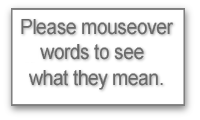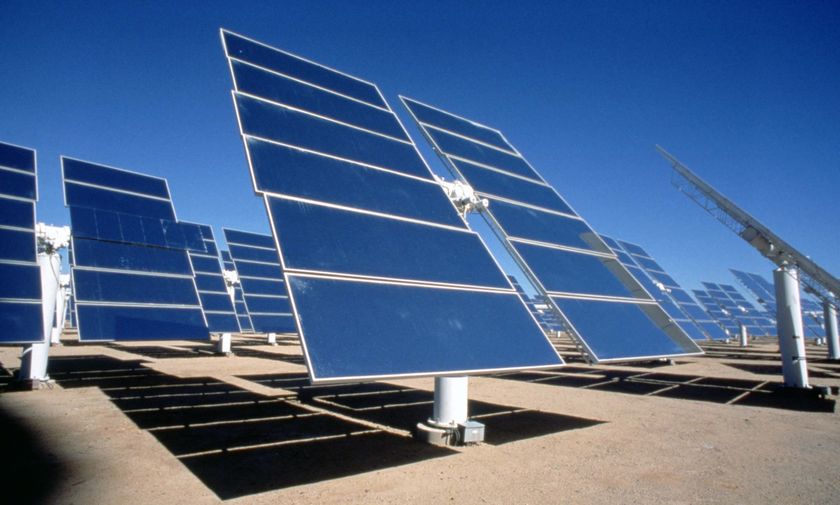Science news
10-Jul-2008 14:00 Eastern US Time
New window on solar energy

CAMBRIDGE, Mass. -- Engineers at Massachusetts Institute of Technology have devised a better way of getting energy from the sun. Solar energy is supposed to be free, clean and green. But right now solar cells cost too much and are too inefficient.
Marc A. Baldo and his team in the department of electrical engineering and computer science have been working with soft semiconductors. These offer promising new ways to make solar cells.
Soft semiconductors are ideal for large area electronics. Films of them are readily deposited on a variety of materials at room temperature. They are tolerant of the defects that always occur when a large area is fabricated.
Try to concentrate
The team's latest innovation is reported in the July 11 issue of Science. It involves the creation of a novel solar concentrator.
"Light is collected over a large area like a window and gathered, or concentrated, at the edges," explains Baldo. So rather than covering a whole roof with expensive solar cells, these are fitted only round the edges of a flat glass panel. The focused light increases the electrical power from each solar cell by a factor of over 40, Baldo says.
Because the system is simple to manufacture, the team believes that it could be in production within three years. It might even be added onto existing solar-panel systems to increase their efficiency by 50% for very little extra cost.
Back to nature
Besides Baldo the researchers are Michael Currie, Jon Mapel, and Timothy Heidel, all graduate students in the department of electrical engineering and computer science, and Shalom Goffri, a postdoctoral associate in MIT's research laboratory of electronics.
The team's whole approach to using soft semiconductors for solar energy takes a lesson from nature. In photosynthesis, which green plants use to get energy from the sun, two tasks are separated. These are absorbing the light and generating the electric charge.
If this separation is also followed in the design of solar cells, says Baldo, "it allows us to improve efficiency and potentially lower costs".
"Biological photosynthetic complexes are perhaps the ultimate demonstration of the promise of soft semiconductors."
On reflection
So in their work on solar cells, the MIT engineers tackle collecting the light and generating the electric charge separately. In their first devices they concentrated on the charge generation, Baldo says. "But subsequently we have worked on the light gathering function, since this offers the greatest opportunity for cost savings and gains in performance."
This is where their new solar concentrator comes in. There are several disadvantages with existing solar concentrators, says Baldo. "They track the sun to generate high optical intensities, often by using large mobile mirrors that are expensive to deploy and maintain."
Also solar cells at the focal point of the mirrors must be cooled. And the whole assembly wastes space around the perimeter to avoid casting a shadow on neighboring concentrators.
Gather better
In contrast the new MIT solar concentrator works like this: The soft semiconductor is a mixture of two or more dyes. These are painted onto a pane of ordinary glass or plastic. The dyes work together to absorb light energy across a range of wavelengths and from all directions.
This energy is then re-emitted at a different wavelength and transported across the pane to waiting solar cells at the edges.
Solar concentrators using some of these ideas were developed in the 1970s, by impregnating dyes in plastic. But the idea was abandoned because not enough of the collected light reached the edges of the concentrator. Much of it was lost on the way.
The MIT engineers realized that a similar approach with much greater control of light absorption and emission could be taken using the new soft semiconductors. By painting a mix of dyes in specific ratios to the surface of glass, the researchers "made it so the light can travel a much longer distance," says Mapel.
Soft but efficient
"We were able to substantially reduce light transport losses, resulting in a tenfold increase in the amount of power converted by the solar cells."
The project uses innovative design to get better solar conversion efficiency without optical tracking, says Dr. Aravinda Kini, program manager in the Office of Basic energy Sciences, which sponsors the work.
"This accomplishment demonstrates the critical importance of innovative basic research in bringing about revolutionary advances in solar energy utilisation in a cost-effective manner."
Mapel, Currie and Goffri are starting a company, Covalent Solar, to develop and commercialise the new technology. Earlier this year Covalent Solar won two prizes in the MIT $100K Entrepreneurship Competition. The company placed first in the Energy category ($20,000) and won the Audience Judging Award ($10,000), voted on by all who attended the awards.
This story is adapted from a press release written by Elizabeth Thomson, MIT News Office.
More information:
On solar cells here, here and here.
And on soft semiconductors here.
More help with words
| atom | attract | bonding | compound | coordinate bonding |
| covalent | crystal | element | factor | particle |
| regular | repel | solar | wavelength |
What's it all about?
- What do solar cells do?
- What is the problem with existing solar cells?
- What materials are Baldo and his colleagues using?
- State one advantage of these materials for solar cells.
- The team's latest development is a new kind of solar ------------.
- The soft ------------ painted on a large pane of glass takes in light and sends it towards the solar cells.
- The solar cells only need to be placed at the edge of the pane because each cell gets -- times as much light as it normally would.
- This means that the whole roof does not have to be ------- with solar cells.
- Why does the team believe the whole system could be in production in three years?
- How else might their solar concentrator be used?
- What exactly is the lesson from nature that the team have learned?
- Using your own words and the words in the pop-up definitions, write a sentence that is easier to understand than the one that begins "Biological photosynthetic complexes are ….". Your sentence should say more or less the same thing.
- Solar cells have to do two things – which one did the MIT team concentrate on first?
- Which one are they concentrating on now?
- Why?
- In your own words state one disadvantage of existing solar concentrators.
- Why do you think the engineers use "two or more dyes" instead of just one?
- What does the team's new design do well that similar 1970s concentrators did not?
- Could their method have been done in the 1970s, do you think? Justify your answer.
- What does "innovative basic research" mean?


